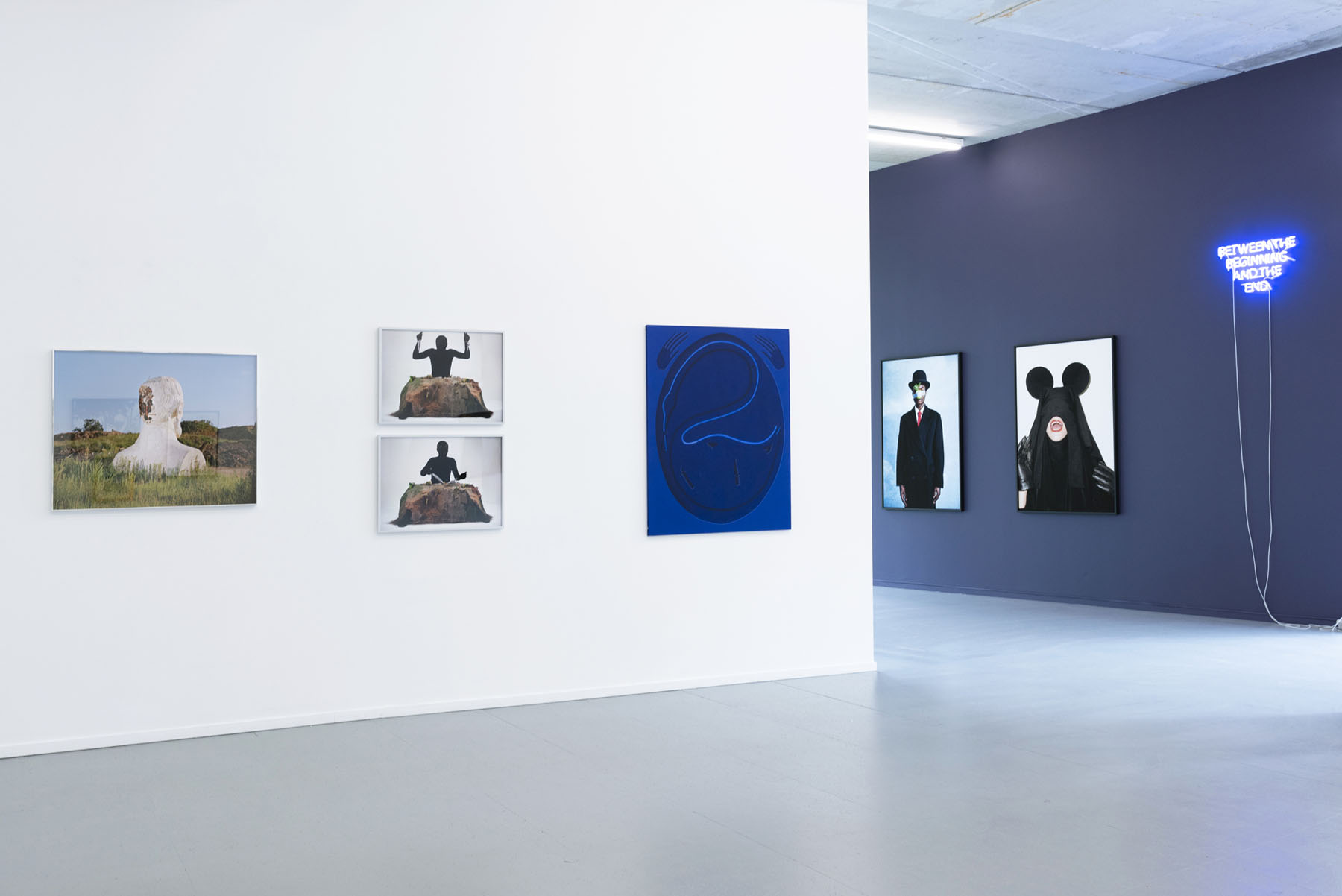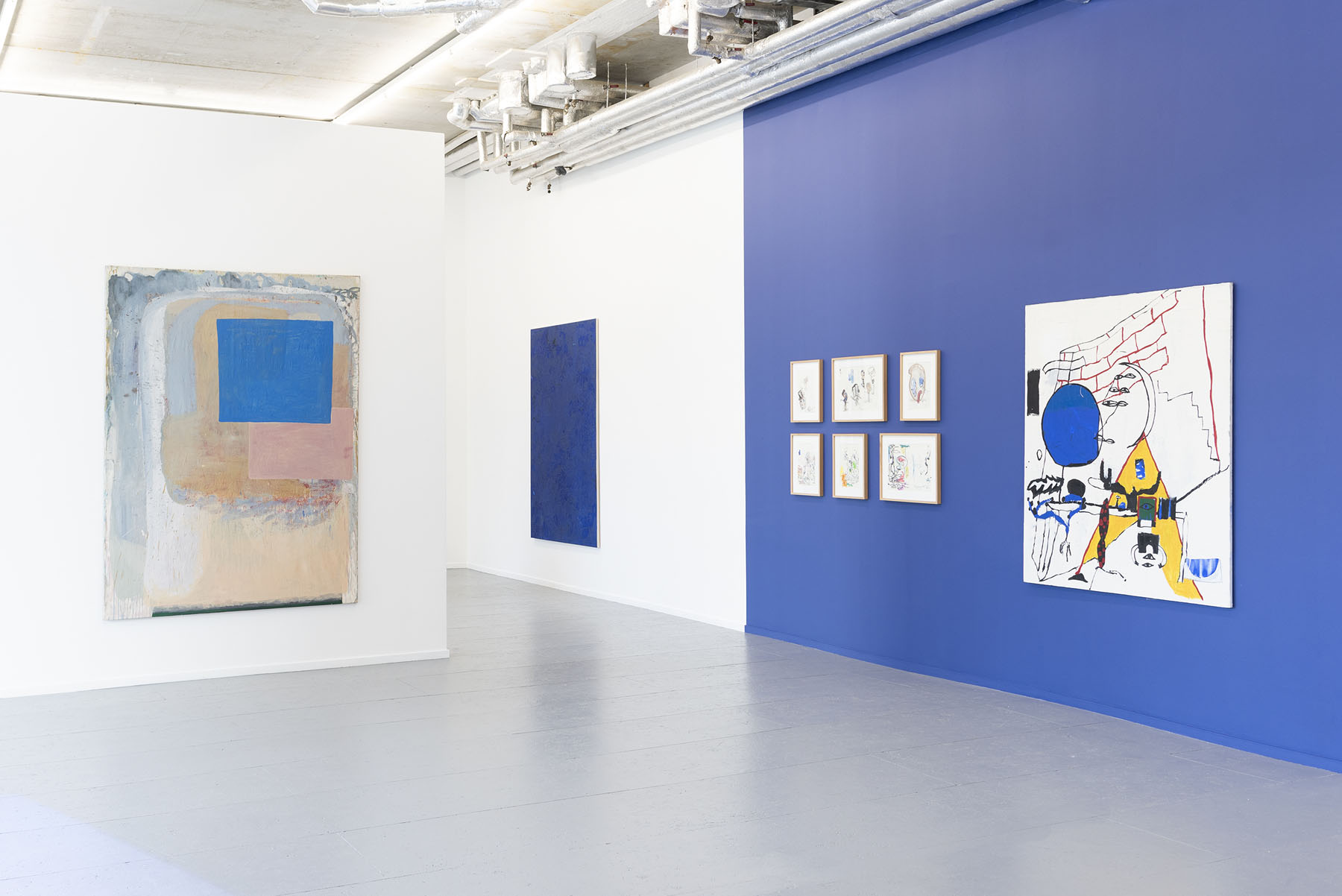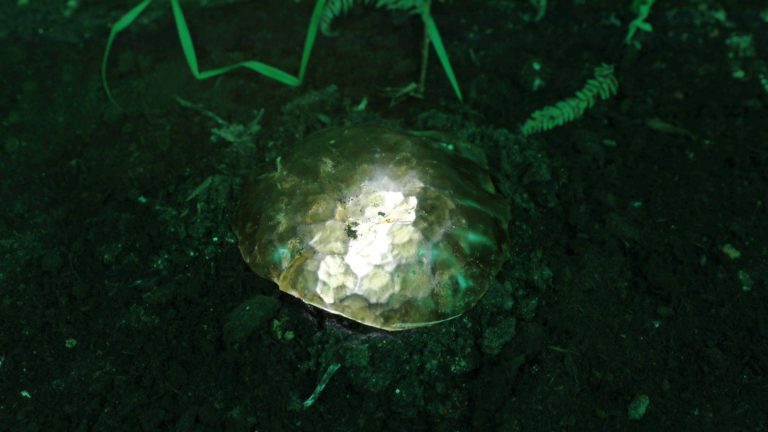Artists: Charlotte Posenenske, Bendt Eyckermans, Charline Tyberghein, Felix De Clercq, Gommaar Gilliams, Pieter Jennes, Ilse D’Hollander, Guy Mees, Willy De Sauter, Max Pinckers, Catharina Dhaen, Perry Roberts, Ives Maes, Anouk De Clercq, Sara Sizer, Mous Lamrabat, John Stezaker, Karin Hanssen, Ann Veronica Janssens, Amber Andrews, Carole Vanderlinden, Stef Driesen, Lieven De Boeck, Kris Martin, Vincent Delbrouck, Beni Bischof, Nel Aerts, Nicholas William Johnson, Sergio De Beukelaer, Sven ‘t Jolle, William Ludwig Lutgens, Jenny Brosinski, Flexboj & L.A., Bram Bogart, Carole Vanderlinden, Vaast Colson, Filip Vervaet, Fleur De Roeck, Anish Kapoor, Yayoi Kusama, Pablo Picasso, and more
Exhibition title: L’Heure Bleue
Venue: Gallery Sofie Van de Velde, PLUS-ONE Gallery, Antwerp, Belgium
Date: August 1 – 23, 2020
Photography: all images copyright and courtesy of the artist and PLUS-ONE Gallery, Antwerp
L’Heure Bleue
In ancient Egypt, the color blue was seen as the color of introspection, of the infinite. In comparison to the other colors of the rainbow, blue has always been associated with metaphysical qualities. More still, it can be seen as the color in between places. The shade that marks the passing, balancing on the threshold of consciousness and perception. Exactly this creates the impression of intangibility, of vulnerability and strength, and makes the color blue irreplaceable for the complex representation of time.
It is no coincidence that the Danish philosopher Søren Kierkegaard chose this color to describe the confrontation between “fear and trembling”. Fellow Dane and director, Lars Von Trier, made the exact same color choice in his depiction of the planet Melancholia, after which the movie was named.
Melancholy is the emotional state of interruption and can be traced back etymologically to the combination of two words: black and bile. The word melancholy is derived from the Latin word melancholia, which in turn comes from the Greek melancholía, consisting of mélan (black) and chólos (bile). In ancient times, medics believed that this condition was due to an excess of black bile in the body.
So the meaning became a puddle where the mixture of different emotions and their corresponding shades of blue darken to black. Yet, this is only a visual reflection of the color blue. But what specific hue are we talking about?
Without a doubt, it’s the blue that the diverse British director Derek Jarman has used to describe his stream of experiences in the movie Blue (1993). It is his final feature film, released only four months prior to his death, due to AIDS-related complications. The illness had already rendered him partially blind at the time of the film’s release, as he was only able to see shades of blue. This blue thus describes the intangibility of his consciousness, in which this color becomes, as it were, a blinding hue of sense and nonsense.
Every shade of blue is produced by an empirical meaning. And yet, every shade creates a collective whirlpool of colors that goes far beyond the formation of a primal meaning. It conveys what was told a long time ago and what still has to be written. Always in accordance with an enigmatic and dreamlike rhythm, while playing with space and time.
– Domenico de Chirico, 2020
***
Up until the 19th century, the blue pigment ‘ultramarine’ was the most expensive color. The pigment was sourced from the precious stone ‘Lapis Lazuli’. The church dictated that this pigment should be used to paint images of the virgin Mary. Ultramarine thus became a symbol of holiness, virtue and modesty due to its economic value.Although the color blue is presented here as independent, the symbolism has become intertwined with the contemporary art market as well. Blue paintings seem to be sold at a 10% higher price. By displaying this curatorial frame within a commercial art gallery, the cradle of the contemporary art market, the exhibition aims to present a critical reflection of the color blue in its individuality.On a second level, L’heure bleue alludes to the idea of melancholy. The blue hour is an hour of change, a metamorphosis within the night. A moment is something one cannot hold on to, they slip through our fingers. The Melancholic mourns those lost moments, the beauty of history.
The Melancholic is wistful and reflects about the past and the future. Melancholy unites heaviness and lightness, tranquility and menace. This sadness is necessary in order to preserve and understand humanity.As a final layer, the exhibition seeks to glance at the future. Melancholy is a state of reflection. We feel sadness due to a loss, but also a desire to fix it. If we could stop and examine this moment of change, what are then the challenges we face today? Can we engage in dialogue with other cultures, find unity in our differences? How to bare the past, if the future is uncertain? Melancholy drowns in nostalgia and tristesse, but also finds happiness within.























































